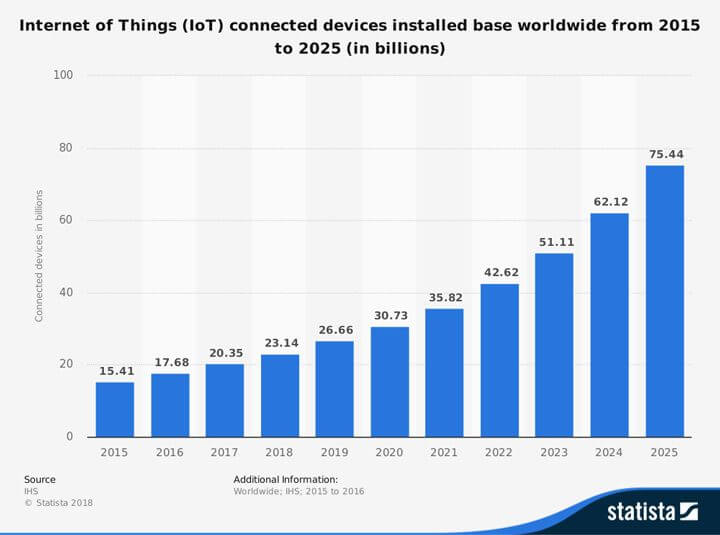What is the Internet of Things and what will our future look like when everything is connected to the Internet? This is the first article in the series of articles about 'Internet of Things' (also: IoT or the Internet of Things). At Coffee IT, we think it's important that everyone, from a technical wonder to an exploratory internet wanderer, knows the principles of the Internet of Things. The technical landscape is changing rapidly, and we are happy to take you along with it. After reading this article you will know more about the world of the Internet of Things.
Internet of Things: an introduction
The Internet of Things is actually a collective name for all objects that are connected to each other via a network. These objects collect, generate and share data such as the way they work or the environment they are in. The name says it all: these objects are connected to the internet. This can be an electric toothbrush that is connected to the internet, a washing machine that you can control with an app or a Google Home speaker. These are everyday objects that are increasingly common in an average home. Outdoors, the implementations of the Internet of Things sound completely futuristic. Think of self-driving cars, entire cities (Smart cities) connected to the internet or low-energy production processes. But how exactly does this work?
IoT: smart devices on the Internet of Things
The internet is a collective name of devices that are connected by IP addresses. These can be computers, but also servers, smartphones, tablets or other electronic devices. The IoT enables devices to communicate with each other without a (computer) screen. The devices all have built-in wireless connectivity. This means that they can be monitored, controlled and connected to the internet. This is often done through a mobile app. The app makes it possible to exchange data through sensors, communication hardware or processors. The result? 'Smart' devices that collect and act on data. The IoT has the potential to make the world around us smarter and easier. We (humans) can give instructions to the smart devices, but most of the work is done without human intervention. These smart devices are capable of making decisions and performing actions themselves. In other words, everyday objects become an entity on the internet.
*The adoption of IoT is widespread across industries, governments and consumers' daily lives. To give you an idea: spending in the IoT market at the end of 2019 is estimated to be around USD 745 trillion. This is an increase of 15.4% compared to last year. According to a study by computer science research firm IDC, sales of IoT devices will further increase to 75.44 trillion by 2025.

Examples of IoT applications
Now you know what it is Internet of Things globally, we can move on to some examples of IoT applications. In theory, any device with an on/off switch can be connected to the internet. This could be a sports watch that measures your energy consumption and uses this information to create a personal report, or curtains that open automatically when they detect sunlight. At Coffee IT we have created several IoT applications for both individuals and companies. An example of an IoT application that improves the efficiency of companies is the Darwin app. Darwin is one building automation app for large office buildings and warehouses. With Darwin it is possible to operate entire meeting rooms online from beamer to solar eclipse. At the same time, building managers receive statistics in an online dashboard about energy consumption and air quality, among other things.
Closing comments
The Internet of Things is changing the technical landscape as we know it. New technology has always been used by people to make working and living easier. IoT makes it possible to exploit new technology. For example, artificial intelligence (AR), smart robot technology, big data, 3D printing, energy saving and other sustainable production processes. Besides the possibilities, the Internet of Things also brings dangers. Once everything is connected to the internet, how will it be protected against hackers, for example? If you are therefore considering creating an IoT application or application yourself, we always advise you to call in a professional organization. This way you can be sure that all information is well protected and is not sensitive to outside influences.
Knowing more? Then watch the video below in which the Chamber of Commerce shows the opportunities of IoT for companies in a simplified representation.

